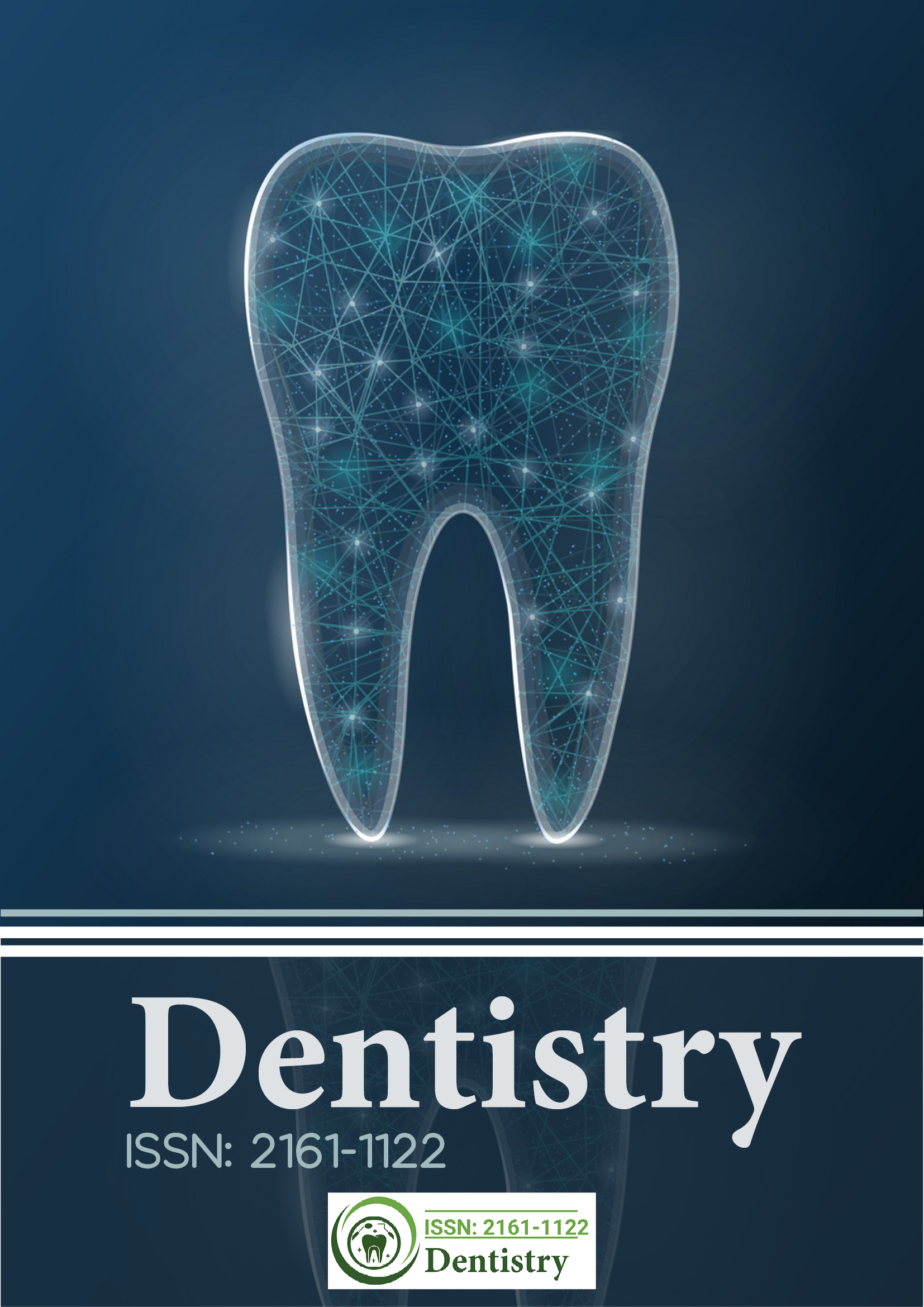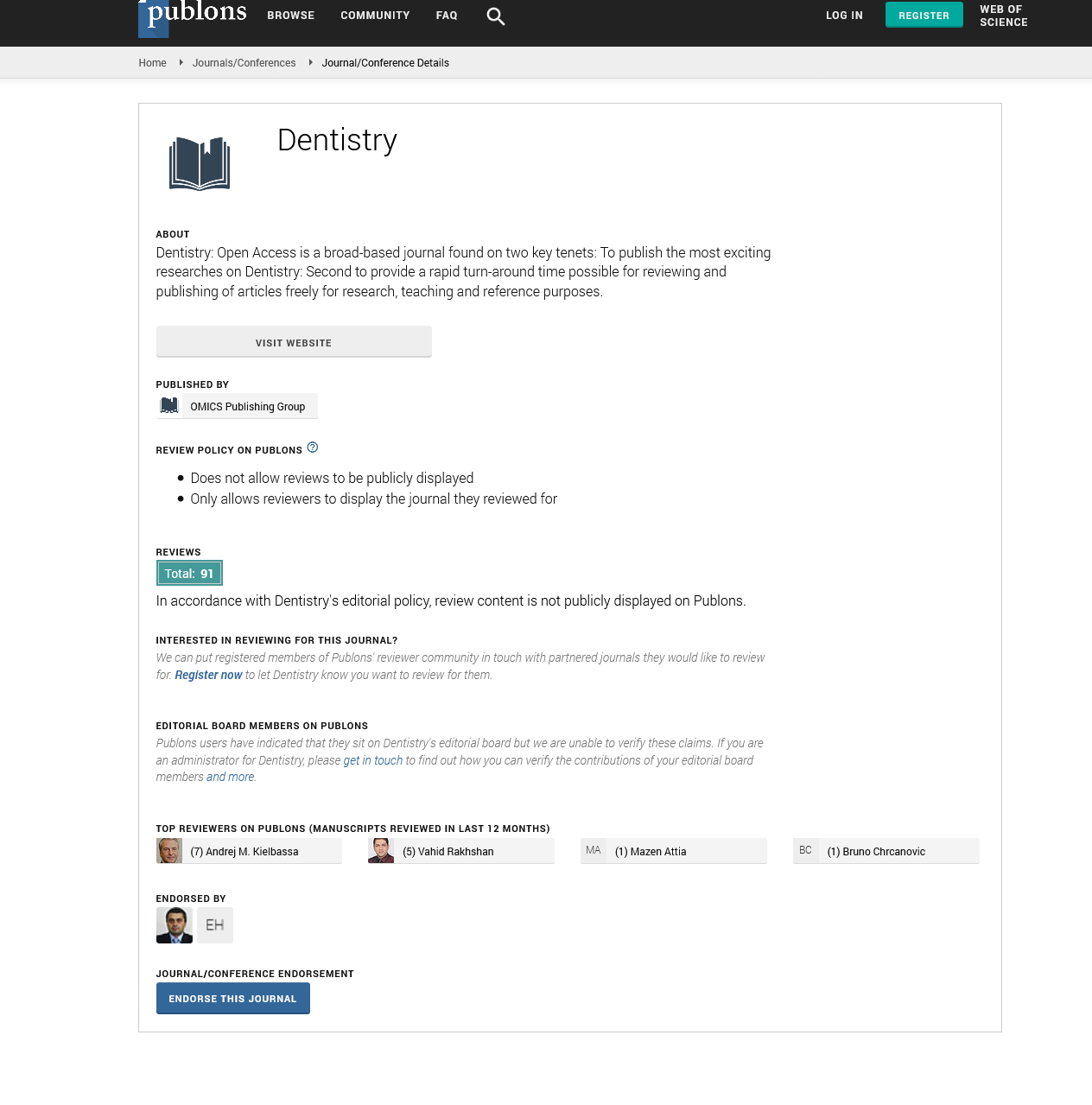Citations : 2345
Dentistry received 2345 citations as per Google Scholar report
Indexed In
- Genamics JournalSeek
- JournalTOCs
- CiteFactor
- Ulrich's Periodicals Directory
- RefSeek
- Hamdard University
- EBSCO A-Z
- Directory of Abstract Indexing for Journals
- OCLC- WorldCat
- Publons
- Geneva Foundation for Medical Education and Research
- Euro Pub
- Google Scholar
Useful Links
Share This Page
Journal Flyer

Open Access Journals
- Agri and Aquaculture
- Biochemistry
- Bioinformatics & Systems Biology
- Business & Management
- Chemistry
- Clinical Sciences
- Engineering
- Food & Nutrition
- General Science
- Genetics & Molecular Biology
- Immunology & Microbiology
- Medical Sciences
- Neuroscience & Psychology
- Nursing & Health Care
- Pharmaceutical Sciences
Radiographic evaluation of the marginal fit of clinically acceptable metal-ceramic crowns
27th Euro Dentistry Congress
October 25-27, 2018 | Prague, Czech Republic
Sheikh Bilal Bidar
Pakistan
Scientific Tracks Abstracts: Dentistry
Abstract:
Purpose: Visual assessment of the crown marginal fit is a challenging task at the proximal surfaces. Another method commonly reported in the literature is the use of radiographs. The purpose of the study was to radiographically evaluate the proximal marginal fit of the clinically acceptable metal-ceramic crowns. Materials & Methods: This prospective study was conducted at the dental clinics of a university hospital over a six months period. A total of 115 metal-ceramic crowns were evaluated prior to the cementation, using non-probability convenience sampling technique. All crown preparations were performed by restorative dentistry residents under supervision of specialists followed by impression of the preparations with addition type silicon rubber material. All crowns were made by a single laboratory technician. Each crown was evaluated by the resident on their respective dies, and then clinical examinations were conducted by seating the crown on the tooth preparation and visual assessment was done by using sharp explorer along margins of crowns. Those crowns which were found to be accurate without any clinically detectable marginal discrepancy were evaluated on bitewing radiograph and any discrepancy at proximal surfaces of tooth was noted. Data were analyzed using SPSS version 22. Chi-square and odds ratio were used to determine and measure the association of marginal discrepancy with tooth locations and tooth surfaces. Results: Two hundred and thirty (230) interproximal crown surfaces were evaluated on radiographs. One hundred and thirteen (113) (49.1%) surfaces had marginal discrepancies; 44 surfaces (19.1%) had horizontal discrepancies, 58 (25.2%) surfaces had vertical discrepancies and 11 surfaces (4.8%) had both horizontal and vertical discrepancies. Horizontal crown marginal discrepancies were most commonly associated with maxillary teeth (OR 3.0) and mesial surfaces of crowns, whereas, vertical discrepancies were most commonly associated with distal surfaces of crowns of both maxillary and mandibular teeth (OR 8.2). Conclusions: According to the results of this study, almost half of the crowns that were considered as clinically acceptable at the margins had marginal discrepancy on radiographic evaluation; with vertical discrepancies mainly observed in distal surfaces of all crowns and horizontal discrepancies mainly on the mesial margins of the maxillary crowns.
Biography :
Sheikh Bilal Bidar has been an international speaker and attended many conferences. He has published many articles to his in many events.
E-mail: sbilalbadar@gmail.com

